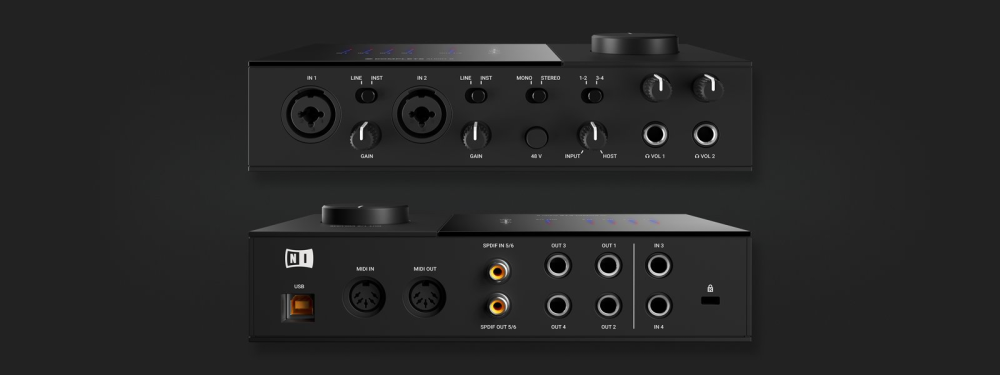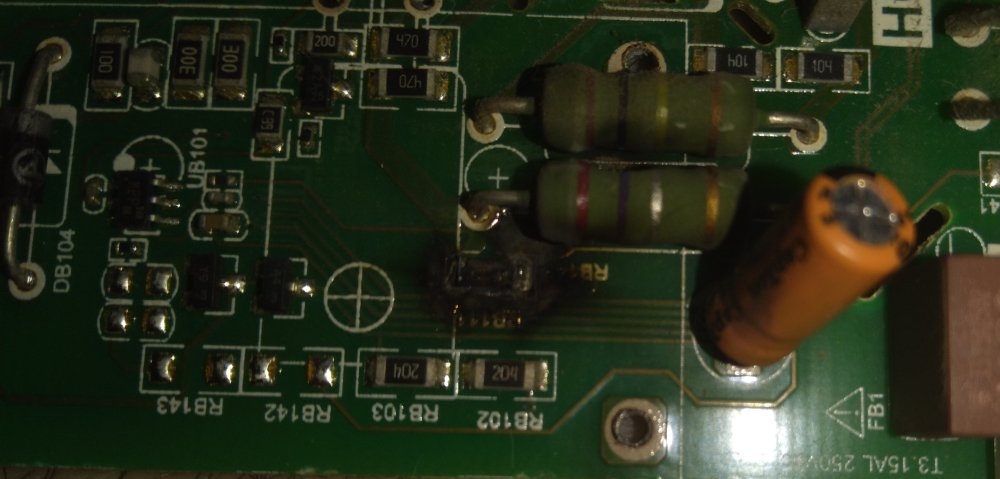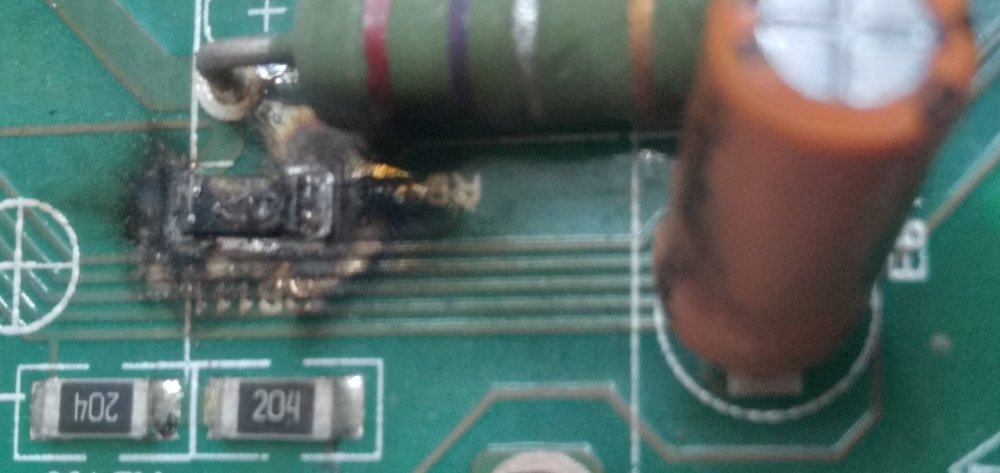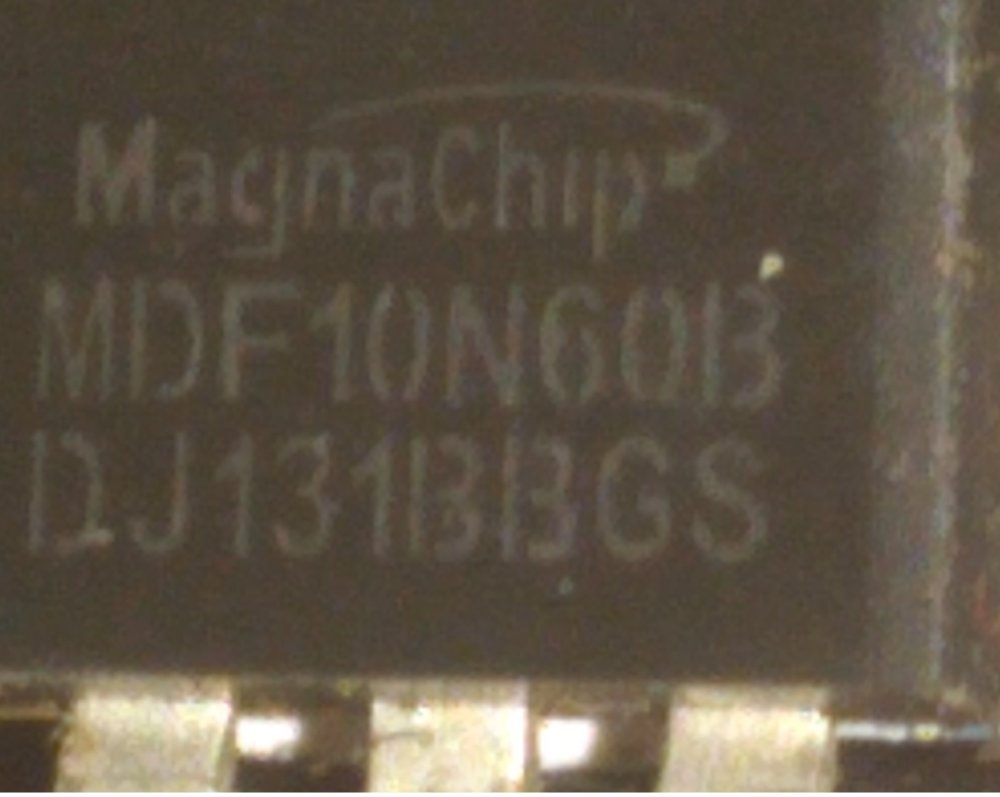-
Posts
811 -
Joined
-
Last visited
-
Days Won
2
Everything posted by Michael Elliott
-
if you're using synths rather than just pure audio recordings, it's likely that one or more of them doesn't correclty respond to the stop / all notes off command / other note-off methods; it seems to be a common problem especially with certain companies (the rgc audio stuff I've got for instance). there should be options for what to do when stopping and/or using hte panic button, though i don't know where they're located in the menus. if you can find an option to send a note off for every single note, and/or a note-on with zero velocity for every single note, then it should turn the synth off. i don't have all those options in my old sonar, so in the main synth i have trouble with (zeta / zeta2), i leave it's ui open but mostly off screen so i can still click on it's arpeggiator enable/disable button--toggling that (whether or not it's being used by the synth) shuts all the stuck notes off in it...but i have to do this for every instance of the synth i have in the project that gets stuck at that point in the project. in my case, the stuck notes happen if i do not press stop where there are *no* midi notes in a track feeding one of these synths. if there was a note playing, it will get stuck. sometimes it's too annoying to keep having to toggle the arp buttons, so for any track i'm not presently editing i will freeze them, then freeze the one i'm editing when i need to edit anohter track and unfreeze that one, etc.
-

What's the best way to soundproof my windows permanently?
Michael Elliott replied to T Boog's topic in Cakewalk Sonar
when it's bad it's bad, when it's not it's fine but when it's bad it's really really bad i'd probably need a totally isolated house internal structure plus mass dampers and bass traps to begin dealing with the problem, but i'm not sure that would solve it all; it's not even "sound" that is the problem, it's physical shaking and movement if people would just have even the slightest (positive) thought for others (instead of complete lack of caring or even active hatefullness) it wouldn't be necessary -

MIDI e-drum tracks clipping during playback but not during recording
Michael Elliott replied to Jordan's question in Q&A
are the drum tracks being recorded as midi, or as audio, or both? if they are being recorded as both, if hte midi is still playing back the drum synth while the audio tracks of the recording of the drum synth is also playing, it would potentially double the output -

What's the best way to soundproof my windows permanently?
Michael Elliott replied to T Boog's topic in Cakewalk Sonar
REDRUM ⛏️ 6+hours since they started and just getting louder all the time; it's after midnight here -
I like the "more on" button.
-
you're welcome. my midiplus 2x2 has been working perfectly since first connecting it, though i don't push it nearly as hard as i used to push the studio128x back when i was all external hardware sounds. i didn't think it should be possible to make something for midi so cheap that it actually didn't work, but somehow a bunch of companies have managed to do it. :rolls eyes: i've had the cheapest possible joystick-to-midi adapters back when computers still had joystick ports, and even those worked perfectly fine, even with some pretty crappy soundblaster-clone cards. 😆 ( think i still have those in a box along with a 'real" joystick-port midi box from advanced gravis; it might have come in a box with one of their cards or maybe it was a turtle beach card; back in win95 days i think. maybe win3.1. 😊 i think it even came with a game control pad too; probably don't still have that though) wow, a quick google to find the image above also found that there are still sites supporting that ag card http://www.gravisultrasound.com/
-
I guess that's why my goodwill-sourced wired rockband drums don't work very well? 😆 (I can't play them (well, anything) for real, but I sometimes use a goodwill-sourced yamaha dd55...someday i need to take it apart and see if waht the problem with the upper left pad is, though, since it's way less sensitive than the others.
-
for years, where i work, we've received some stuff (that we're not supposed to put on the shelf) for the holidaze sneazon in the middle of summer or earlier. but we start getting serious shipments of it before halloween, and often the halloween stuff starts going clearance even before that week. 😕
-
part of that isn't just the caps; it's the other parts not being chosen or the circuit not being designed so that it may survive / "work" even when the caps no longer perform as well as designed (since all liquid electrolytic caps will eventually fail from electrolyte decomposition and/or fluid loss; they all have a time-rating for how many hours of operation they're guaranteed (or expected) to work for under a specific operating temperature or other conditions). but without well-made caps, anything that does require them will not work correclty or at all, and the worse they're made the faster that will happen. i used to have some test equipment (oscilloscopes, nixie-tube multimeters, etc) that were made before i was born, more than 5 decades ago (one of them would be more than 60 years old now if it was still around), and they all still worked without any part replacments. before i lost them in the housefire a decade ago i had planned to go thru the ones i used most and test caps, etc., and replace anything that was out of spec, see if they got better readings afterward, but that didn't happen. but i've also had stuff of all types from the 50s, 60s, 70s, and 80s that required cap replacements to be usable. my 1930s simpson multimeter doesnt' have any caps, just resistors, so it seems to be ok. (though it requires a diy battery since they don't make the kind it uses anymore :lol: ).
-
version 8 with the changes above. https://www.soundclick.com/amberwolf/?more=14896411 trying to figure out kerovee to more naturally retune the segments of the vocal clip samples that are a different note / key than the song is at that point, since the present retuning is very unnatural, having been done by just splitting that section of the clip off and using the clip properties note +/- to set it to a different note. (which works fine to test them, but in most places isn't suitable for the result I'm after.
-

What's the best way to soundproof my windows permanently?
Michael Elliott replied to T Boog's topic in Cakewalk Sonar
that's what the big foam blocks that used to be couch cushions do for me in my windows. (sometimes canine destruction leaves useful remains) -
Your post doesn't say what monitors you have, so we don't know what connectors they have. This page found with google via your interface description https://www.native-instruments.com/en/products/komplete/audio-interfaces/komplete-audio-6/ has this image Which shows both digital and analog options for output. Are you using an analog cable, or digital? If analog, are you using the front or rear connectors to go to the monitors?
-

Samsung EVO 870 - problems solved ?
Michael Elliott replied to TracingArcs's topic in Computer Systems
Then I'd guess my issue is specific to the laptop. I'd have to take both drives out and put them in a desktop motherboard with enough SATA HDD connections to mount both simulaneously directly to it and retry. It's certainly possible--quite a few manufacturers did stuff outside their normal ways since that started (some still are, and some have had to redesign products because of "permanent" unavailability of some components). None of them are likely to publicly discuss any of that; it might open them up to legal issues (don't know how) and that's a can o worms companies never want to open. -

Export busses through Entire Mix?
Michael Elliott replied to boinkeee2000's topic in Cakewalk by BandLab
I'm not an expert, but I can't imagine any way to make that happen. If they want it to sound like a cohesive mastered stereo track they're going to have to actually cohesively master it as a stereo track. Not really any way around doing work to get work done. If you process all the stuff as individual tracks it won't sound like (probably not anything like) the full masterbus output would, for reasons others stated. You should just tell the client the reality of how it works, and let them decide what work they are willing to do, and give them what will let them do that. If they don't accept that, well, can't help everyone. -
Yeah, I've dealt with bad caps problems since the 90s because companies kept making cheaper and cheaper stuff; it just got exponentially worse when they did the bad formula thing. (been doing this stuff since the 80s ::creaking sounds:: 😆) When I was in still in computer repair the first several years of this century (still wierd to say that) we had many many blown caps on all sorts of things (motherboards, psus, inside monitors, etc) and way too many devices were destroyed by the cap failures (unfiltered spikes taking out other parts after the caps stopped working, even when they didn't explode). I lost count of the number of things I was given as junk that just replacing the caps would fix. (today that includes things like ebike controllers, too, but that's because they often use parts not rated for the usage, like caps not made for high temps put inside motor controllers that are inside other things so all the heat stays right there and cooks the caps). The really sad thing is that a couple decades later, there are STILL companies using those bad parts to build things with, as they still keep getting re-injected into the supply chain. Plus there are companies still making crappy caps, though those are easier to avoid by always using good brands like Rubycon, Panasonic, etc, and only buying them from reliable suppliers like Mouser, etc that actually check their supply chains. Not to mention the bajillion counterfeit parts out there. Unfortunately on this it's not (just) a cap problem (that would have been too easy; the cap failed and then other stuff died downstream), it's the main switching transistor, plus the resistors that fed it's gate, some diodes (I think; hard to tell from the remnants), and some other bits. There's not enough left of some of the parts to tell for sure what they were, much less which part number or value. Some bad pics of some of the carnage are attached; I apparently don't have them all on the computer. I poked around for a schematic or service manual, but this old Westinghouse (IIRC) didn't get one uploaded that I could find so far. IIRC it was made in 2013 or 14, but I'd have to go look in the other room at it's case to be sure.
-

Export busses through Entire Mix?
Michael Elliott replied to boinkeee2000's topic in Cakewalk by BandLab
You'll have to pick one way or the other. If you need the master bus fx to be on all of the separate ones, you'll have to actually put it on all of them, and whatever happens when summed is going to happen. The same thing will happen if you export one track (or bus) at a time thru the master bus (by muting or archiving all the others temporarily). If you don't want that to happen, then you have to leave it off all of them, and then let whoever sums them back together put that chain on their master bus. If you need some of the fx on some of the buses (or tracks), then you'll have to put them only on those, and not on the master. Then you can choose to export as separate files per bus or per track to do it all as one export pass. -
If you've actually lost the files somehow, you can put your own wave files in the folder. For my very old version, that's in this path: C:\ProgramData\Cakewalk\(programname)\Metronome but you can browse to wherever your version has stored them and stick them there: This is what I use (IIRC, I originally gave it to the bakers way way way back (sampled from my Ensoniq ASR88 (or the EPS16+, don't recall which as it's the same sound either way) as Metro Click 2). EnsoniqMetronomeClick.wav I use it because I can clearly hear it thru anything else I'm playing, for those times I need a metronome (not usually).
-

best audio interface with RCA inputs
Michael Elliott replied to maxsoren's topic in Cakewalk by BandLab
I guess that means it has clean enough sound input if ti works for this purpose? I have one that I have not used yet, only connected to verify it worked, picked up at Goodwill for a couple bucks a while back (kept as a spare interface "just in case"). If it's decent and actually has a real (low latency) ASIO driver, I can use it on the old HP rack server I'm currently setting up as a new main system. A quick google finds a "64 bit" version of the driver here https://gearspace.com/board/music-computers/1316473-behringer-asio-driver-lower-end-interfaces.html that I've attached to this post in case it is useful (but I have not tried it yet!) and goes away on the other site. It says it is for the "UMA25S, UCA200*, UCA202, UCA222, UFO202, UCG102, iAXE393/624/629 and many more." There is a note in the thread After getting that one, I used it's filename wiht 32 in place of 64 to google for the othe rone and found ithere https://www.driverguide.com/driver/detail.php?driverid=1689325 I've also attached that (but again, haven't tested it). BEHRINGER_2902_X64_2.8.40.zip BEHRINGER_2902_WIN32_2.8.40.zip -
That's why when I setup a system, the first thing I do is disable all updating "features". If I find a problem I can do whatever specific updates are needed to fix that problme, and just that problem, but having a system just do it's own updates for whatever is *always* going to cause problems of it's own that would not happen if it didn't do that. Before I started doing that (a long time ago), every system I ever had, for any purpose, would get screwed up because of autoupdates. Problem might be tiny, or catastrophic, but eventually they would always happen. So, if something can't be prevented from doing this, I can't allow it on my system. (Many users may not "have problems with updates", and that's great--but they might just not be problems you notice, or that affect what you do, but any change to a working system has a chance to turn it into a non-working system. The more changes there are, the exponentially more likely a problem that affects you will show up, because of all the interdependencies of things. It doesn't even have to be a bug that causes the problem--it could be a *fix* to a bug that did something that some other program actualy depended on (was designed around) that then makes that program not work right that then makes the other programs that depend on that program...etc.).
-

Samsung EVO 870 - problems solved ?
Michael Elliott replied to TracingArcs's topic in Computer Systems
What specific things are you worried about? I have a couple of 1TB 870 Evos bought around a year apart (june22 and oct 23) from here https://www.amazon.com/gp/product/B08QBJ2YMG I bought the first one to clone my laptop's regular spinny type 1TB hdd to, and then keep the spinny one in a drawer as backup and use the faster SDD, but I was never able to get any of the free cloning software to actually work. Failures were various, from not even being compatible with SSDs (which doesn't make sense; it's just files I'm dealing with!) to being unable to complete the clone (with no useful error messages or codes). I'm sure there's software I haven't tried yet; somewhere I have a list of ones I did try but don't recall ATM, it was a while back now; I had given up on trying a couple months after the first purchase, though I retried the same things after getting the second one from a super-deal offer. (the stuff for cloning and monitoring that came with (on!) the drive from Samsung doesn't apparently work with SSD's, which is *****; neither does any newer version of any of the Samsung software I tried since, which is even more *****--if they sell SSDs they ought to include software for them that works with them). The spinny source drive passes the tests I can throw at it, but I haven't yet found something that can do a real test of the SSDs; they just look at it's SMART and say "sure, its' ok" and won't do an actual test, or else just says "sorry, I don't do SSDs". The SSDs format (even full version) fine, and I can write and read the entire drive fine just copying files to and from it till it's full. So...there doesn't appear to be anything wrong with the drives, just that I can't use them for the purpose I intended. (I have not had the money, time, and energy to try a different brand of drive yet, because I don't expect to get different results as I still haven't found the reason the clone doesn't work with the softwares that will even try. I expect the problem has to do with the way I have to connect the drives up--the internal laptop SATA connector is only for one HDD, and the optical drive bay connector, even with an adapter, is not able to talk to anything other than an optical drive--the laptop firmware simply isn't created to allow it (which seems ***** to me, as it prevents using that drive bay for extra storage instead of the almost-useless optical drive (these days). So I have to use a USB external SATA adapter for one of hte drive (tried it both ways, too), and I have several--some on a cable, some in a case, and a couple in desktop holders reminiscent of the personality-imprint-chair usage in Dollhouse. I was recently advised of a program called Macrium Reflect Free, so I have to look into that; if I'm lucky it will be compatible with the SSDs and correctly work to create a full image of the spinny to the ssd. That said, I have run across more than one webpage that discusses failures of the controller chip used in SSD / NVME drives, and there is one called "Phison PS311" that turns up in failures more often than any other by quite a lot. This page https://www.exalab.cz/en/blog/explanations-and-tips/ssd-controller-failure-satafirm-s11-sataburn-s11-data-recovery says "Among the SSD models with the Phison PS3111 controller, which may be affected by the SATAFIRM S11 or SATABURN S11 issue, are Apacer AS340 or AS350, Gigabyte GSTFS31, GOODRAM CX300, GOODRAM S400U, GOODRAM IRDM, Lite-On MU3, Lite-On PH4, Lite-On PH6, Patriot Burst, Patriot Spark, Seagate One Touch, Silicon Power Slim S55 or S60, Silicon Power S56, Smartbuy Revival 2, or S11T. Please note that this list is not exhaustive, and some brands may use this controller under their own designation." -

Backing up Cakewalk projects
Michael Elliott replied to RICHARD HUTCHINS's topic in Cakewalk by BandLab
What kind of projects do you usually create? All audio recorded in? All MIDI with hardware external synths? MIDI with internal synths in the project? Some variation(s) on these? Something different? How do you usually save your files while working? Do you just save over the file and only have one per project? Do you always use SaveAs and make a new version of the file? Do you use per-project audio folders, or just one giant audio folder for everything? Some variation(s) on these? Something different? Do you want to save projects so you can always reproduce them identically whenever you work on them, no matter how old they are? Or do you only care about the current project while you're working on it? Etc? How you create, use, and save the projects makes a difference in the backup strategy, partly because there is different data generated (and different amounts), and partly because some of them may require saving the configuration of the whole system (with some form of manual notes) to be sure you're able to reproduce the project later. -
At least two things could do it: If the pesky track is still armed for record, then it will also record any inputs. Disarm the tracks you don't want to record to before starting a recording session to prevent that. If the setting "allow MIDI recording without an armed track" is enabled, and you have selected that track, then it will record on that track even if it isn't armed (as well as any that are armed). This will happen even if you have set the port to "none" because Cakewalk will change it to "omni" so that it can record per the setting that's been enabled, during the recording. Only select or click on tracks you want to record on to prevent that, if you need to use this setting.
-
FWIW, if there is only one way to get a feature to work when you need it, and you do need it, then it doesn't really matter what effort or resources are involved--it's "worth it" because otherwise you can't do it at all. So, if someone does need the view that only works with hardware ports but has a synth that has to be hosted in a track inside Sonar/CbB that they require that view to work on...they'd have to use this workaround (if it does indeed work, as I haven't tried it for that). While it would also then work with external synths (hardware or software standalone units), external stuff won't be loaded with the project, none of it's settings will be saved with the project, and the only way to "know" what the tracks that feed out to the external stuff are supposed to do (other than remembering all the details forever which I probably couldn't do even later the same day 😊 ) is to make notes in the File-Info/stats window (if you want them to stay with the project and be there when you open it) about all the routing, patches, etc for that external stuff. (this is also true of hardware synths/etc., and is really why I only use internally hosted stuff for quite a long while now). If there's some other easier way to do it, then sure, that easier way would work...but if there isn't....there isn't.










